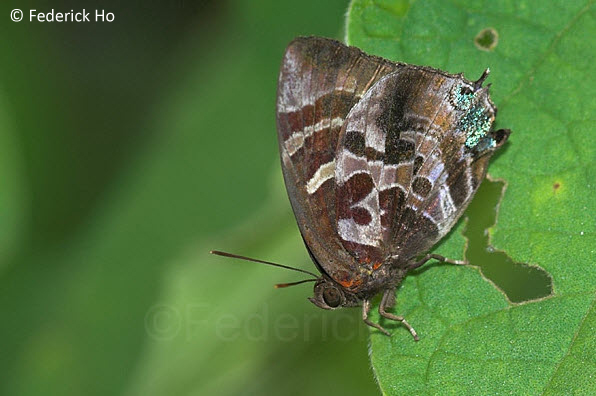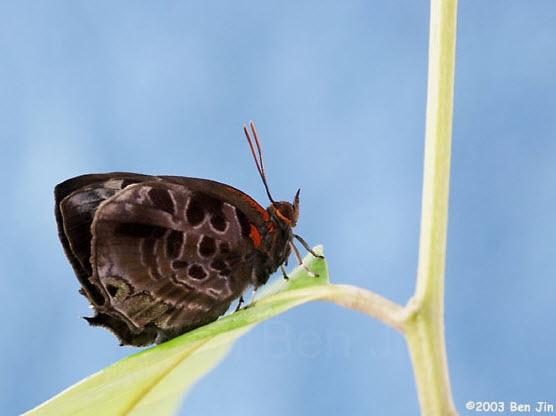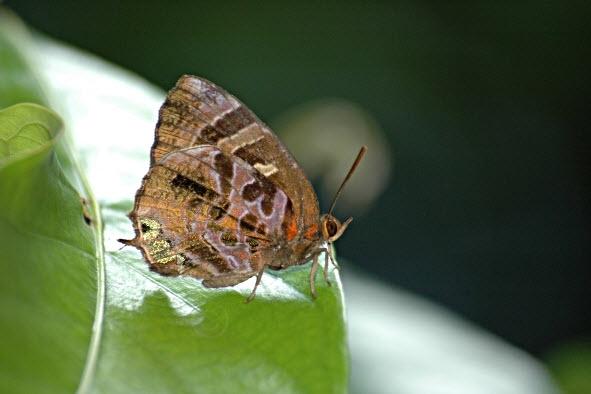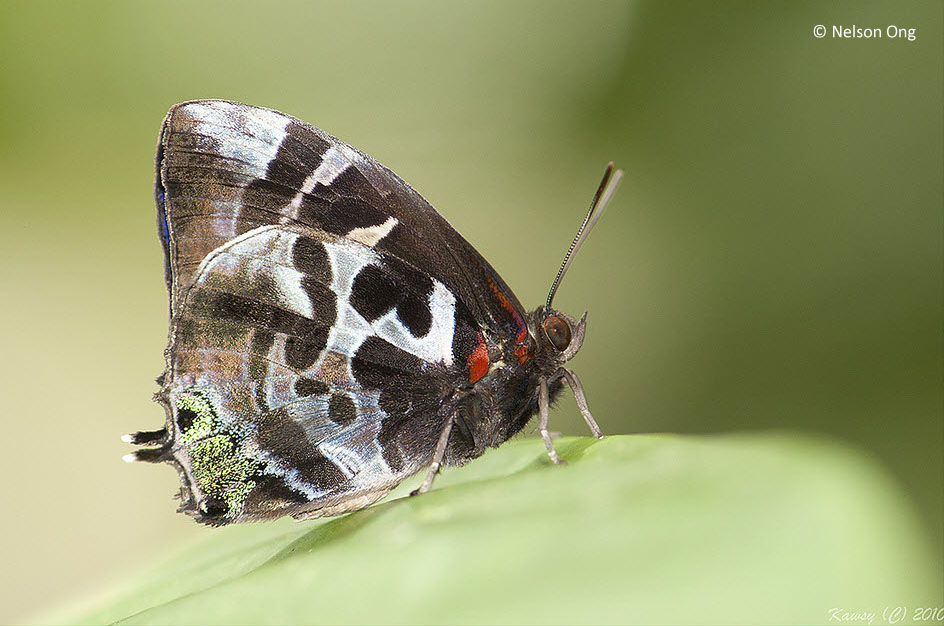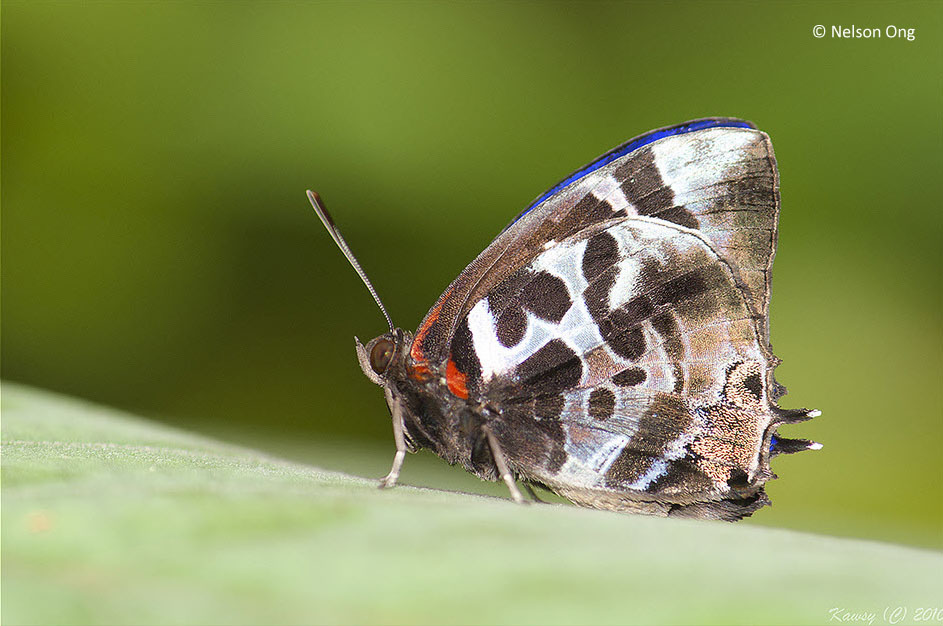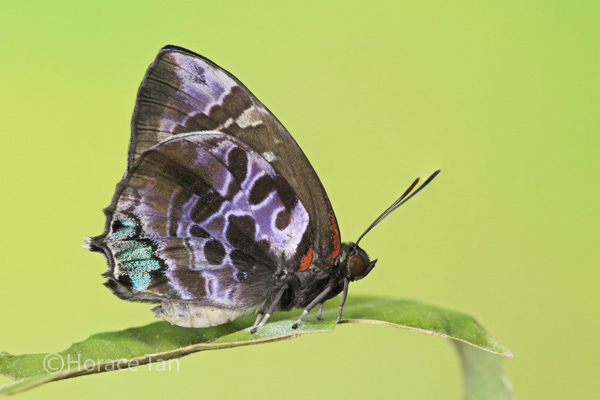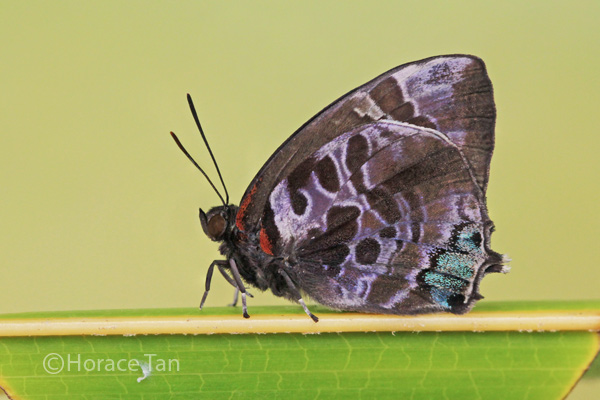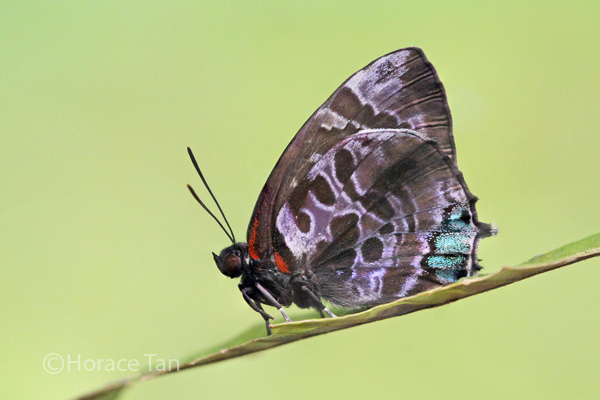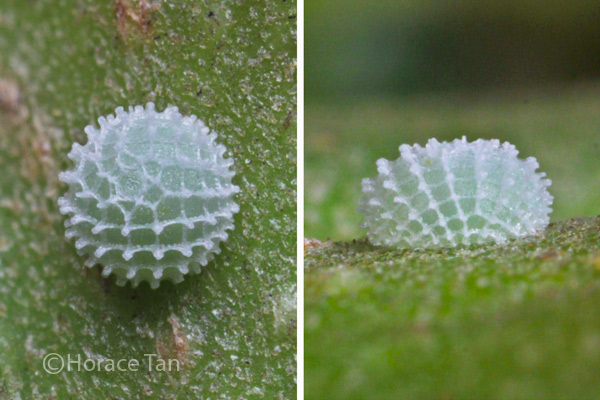Flos diardi capeta
Bifid Plushblue
| Family: | Lycaenidae |
| Subfamily: | Lycaeninae |
| Genus | Flos |
| Species: | diardi |
| Subspecies: | capeta |
| Common Name: | Bifid Plushblue |
| Life History: | complete |
| Extant in countries: | •Singapore •Malaysia •Thailand |
| Hostplants: |
Description
At a glance, Flos diardi capeta looks like its close cousin, Flos fulgida singhapura, but can be separated quite easily by the clavate spot in the middle of the hindwing which is separated from the cell spot. The males are deep violet blue with a thin border, whilst the female, figured here, has broad black borders. The species has a pair of long white-tipped tail. The wing bases are dusted with red. The butterfly is a relatively strong flyer and tends to fly restlessly around low bushes and shrubs. When in flight, it may also be mistaken for one of the many Arhopala species.
Habitat & Habits
This species of the genus Flos is fairly often encountered in the nature reserves of Singapore.
Other Observations
We recently observed a female laying eggs on an unknown plant. Four eggs were laid close together on the top surface of a leaf.
Early Stages
Refer to the ButterflyCircle's blog article - The Life History of the Bifid Plushblue.
Further Reading
To be detailed.

